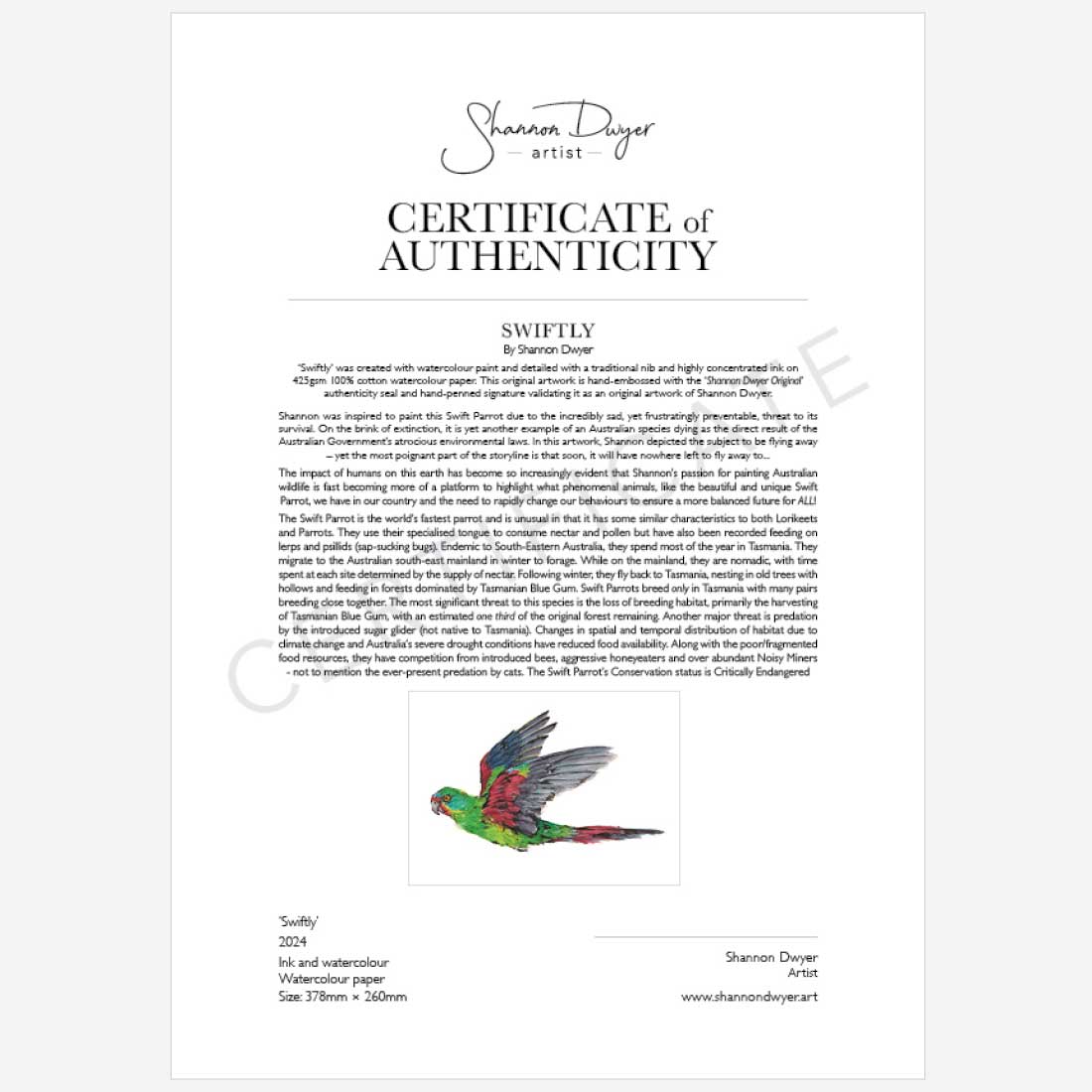Shannon Dwyer Artist
Original Artwork
Couldn't load pickup availability
'Swiftly!', the Swift Parrot
Original Artwork by Shannon Dwyer
Shannon was inspired to capture the beautifully-vibrant Swift Parrot, not only for its kaleidoscope of colour but to also bring light to its incredibly sad, yet preventable, threat of survival. On the brink of extinction, it is yet another example of an Australian species dying as the direct result of the Australian Government’s atrocious environmental laws.
In this artwork, Shannon depicted her subject to be flying, seemingly 'free'...yet tragically not free of human destruction...
This artwork has been hand painted with professional-grade watercolour paint and detailed with a traditional nib and highly concentrated ink on 300gsm 100% cotton watercolour paper.
Details:
Artwork Size: 378mm × 260mm, which has been mounted on acid-free matboard.
Artwork is embossed with the ‘Shannon Dwyer Original’ authenticity seal and is signed by the artist, validating it as an original artwork of Shannon Dwyer.
Artwork will be accompanied by a signed Certificate of Authenticity.
Free Delivery within Australia.
*Price is for mounted artwork only. Any framed image examples are for illustrative purposes only.*
Share









‘Swiftly’ was created with watercolour paint and detailed with a traditional nib and highly concentrated ink on 425gsm 100% cotton watercolour paper.
Artwork Size: 378mm × 260mm
This original artwork is embossed with the ‘Shannon Dwyer Original’ authenticity seal and hand-penned signature validating it as an original artwork of Shannon Dwyer.
Artwork is accompanied by a signed Certificate of Authenticity.
‘Swiftly’ was created with watercolour paint and detailed with a traditional nib and highly concentrated ink on 425gsm 100% cotton watercolour paper.
Artwork Size: 378mm × 260mm
This original artwork is embossed with the ‘Shannon Dwyer Original’ authenticity seal and hand-penned signature validating it as an original artwork of Shannon Dwyer.
Artwork is accompanied by a signed Certificate of Authenticity.






